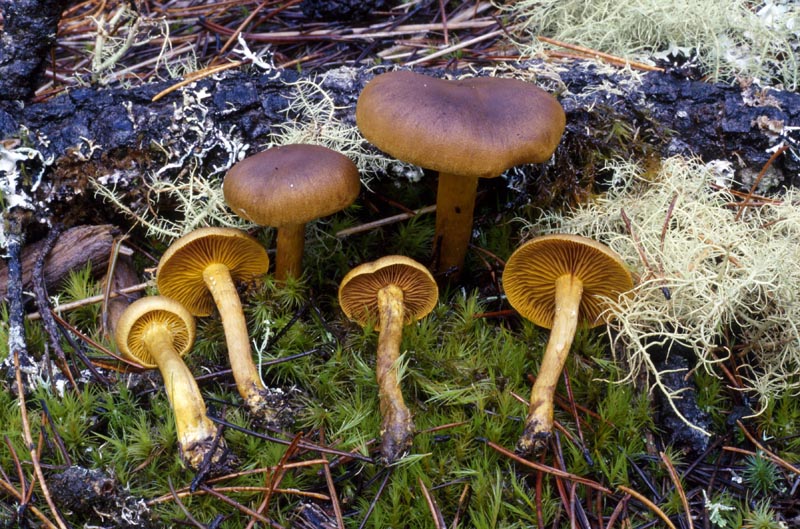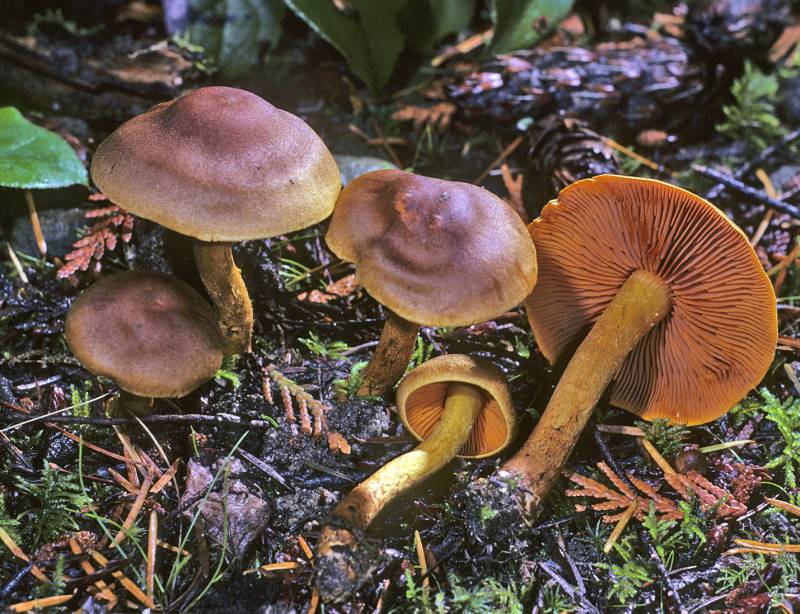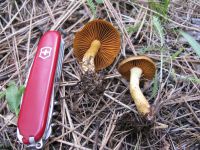Distribution: Common and widespread
Habitat: C. croceus occurs throughout north temperate forests and into alpine and arctic areas. It grows with various conifers, as well as hardwoods including beech, birch, and willow.
Conservation Status: Not of concern
Edibility: This species is commonly used for dying wool.
This species is commonly used for dying wool.
Cortinarius croceus is generally a medium-sized species with caps that are dry and finely fibrillose to fibrillose-scaly, with yellow-brown to red-brown colors, and often more yellowish on the margin. The veil usually is yellow but can be brownish red to olive, and sometimes leaves distinct fibrils or zones and patches on the stipe. The gills are close to crowded, rich yellow, sometimes with olive, orange, or red tones. The stipe is slender, typically cylindrical, yellowish, with a whitish yellow, yellow or even reddish tinted base. The flesh is yellowish or sometimes olive tinted or grayish, and typically has a radish odor. The spores are ellipsoid, distinctly ornamented, and up to about 9 μm long. Often large numbers can be found in open areas, along roadsides and banks, among mosses and lichens or on bare soil. There are a number of species that are similar to C. croceus, the closest one being C. cinnamomeus, which differs by its orange gills.
Sources: Trudell, Steve and Joe Ammirati. Mushrooms of the Pacific Northwest. Portland, Timber Press, Inc. 2009.
PNW Herbaria: Specimen records of Cortinarius croceus in the Consortium of Pacific Northwest Herbaria database.
CalPhotos: Cortinarius croceus photos.






